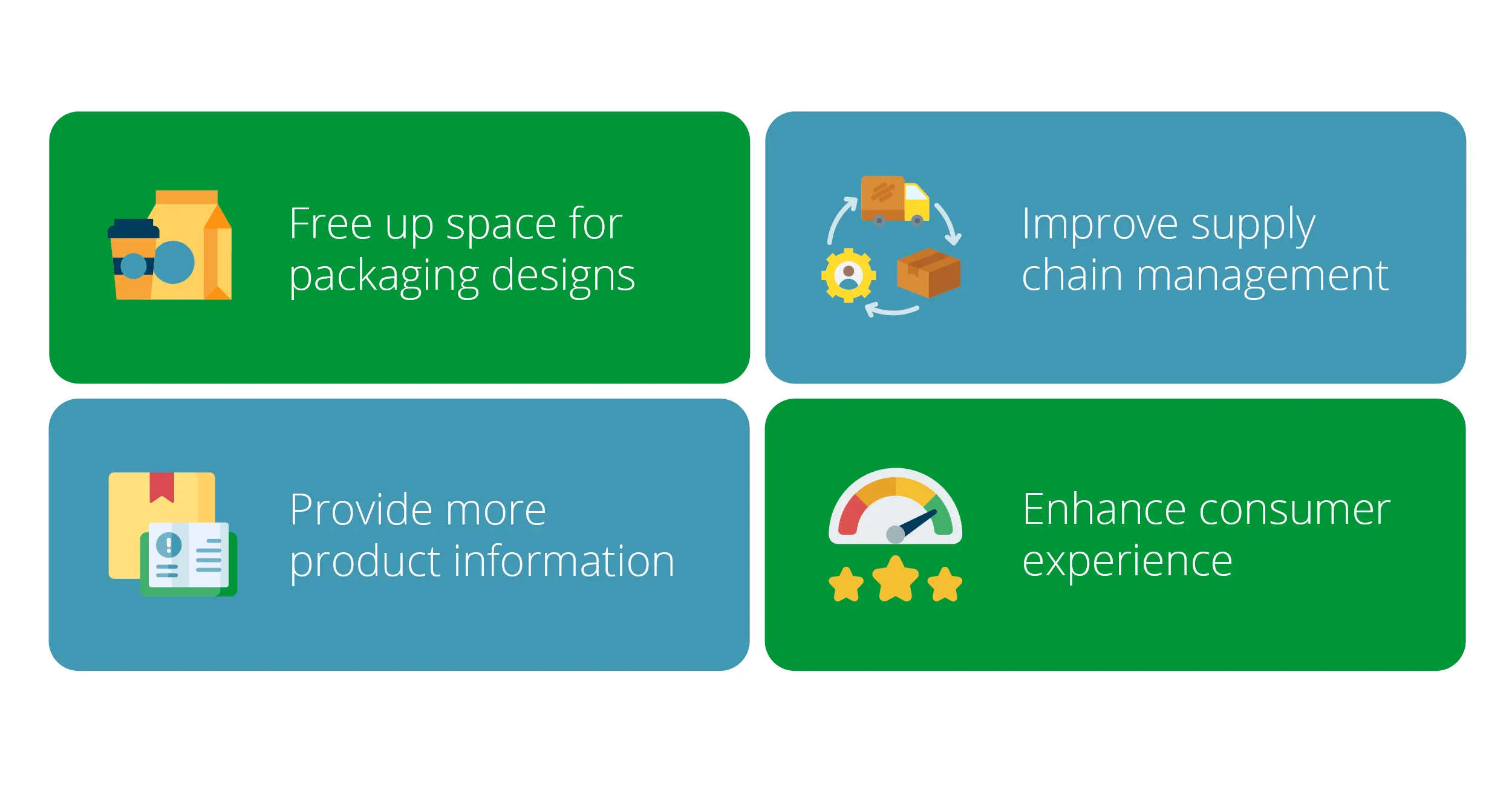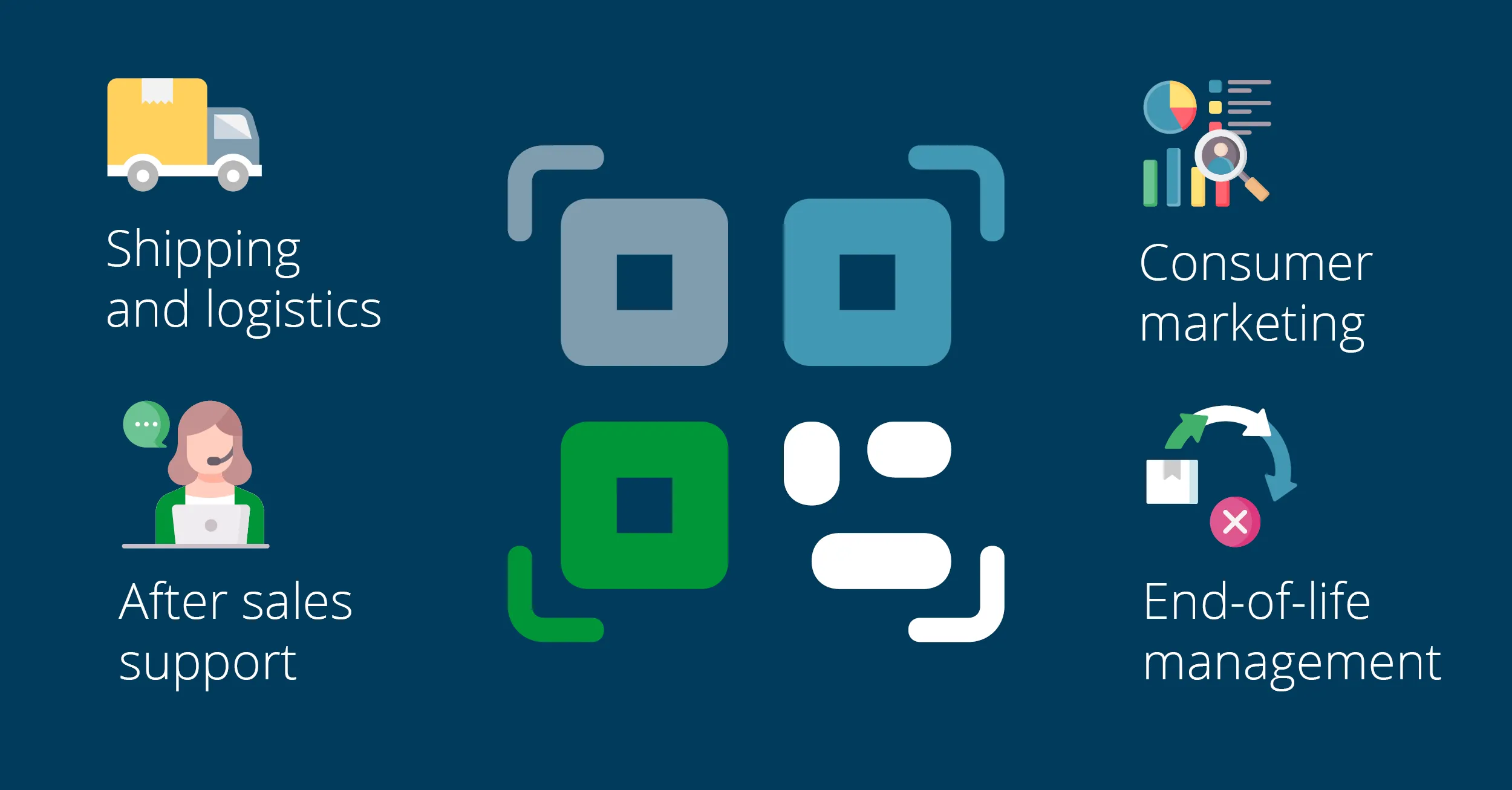Are you ready to say goodbye to linear barcodes?
Linear or ‘one-dimensional’ barcodes are the black and white striped codes found on most consumer products today. These codes have been a familiar sight in the global retail industry since the 1970s but are now starting to be replaced by two-dimensional barcodes, or ‘2D codes’.
If you’re a brand looking to stay ahead of the curve, it’s time to start thinking about how you will manage the global migration to 2D codes.
Global standards organisation GS1 is working with manufacturers and retailers for the acceptance of 2D codes at retailer point-of-sale (POS) systems. While the shift to 2D codes is not mandatory, this change represents a significant opportunity for brands that shouldn’t be missed.
In this blog, we’ll provide invaluable tips on navigating the implementation process smoothly and making the most of the 2D code opportunity
What’s the benefit of a 2D code over a linear barcode?

The main difference between 2D codes and linear or one-dimensional barcodes is that 2D codes can hold significantly more data. In addition, 2D codes are more robust against damage and wear than linear barcodes as they have in-built error correction capabilities. Finally, 2D codes are also generally smaller, and will usually be read more quickly and reliably at the till.
As well as freeing up label space for innovative packaging designs and consumer marketing material, brands using 2D codes can embrace the additional data capabilities to provide more product information, improve supply chain management, and enhance customer engagement.
GS1 has developed a new standard to help brands prepare for the global migration to 2D codes at the POS – known as QR codes powered by GS1, previously the GS1 Digital Link. The new standard makes it possible to add a GS1 identifiers to a web address URL contained within 2D codes as structured data.
The value to brands and consumers comes from the GS1 identifiers contained within the URL, such as the Global Trade Item Number (GTIN), which act as links to digital content. While standard QR codes link to one static webpage, the GS1 identifiers can be used to connect people to multiple different web addresses depending on the device or application used to scan the code. For example, a mobile phone scanner could link to a marketing promotions page via a product batch number or serial number.
In this way, QR codes powered by GS1 multiple benefits to both brands and consumers via a single code, providing data sharing capabilities in everything from shipping and logistics, right through to aftersales support, consumer marketing, and end-of-life management.

In the following sections, we will outline the different data elements available for brands to use and discuss the benefits of adding variable, unique, or batch-level product identifiers.
The Key Elements of a QR code powered by GS1
Global Trade Item Number (GTIN)
The GTIN is the first and most important attribute of a QR code for use at the point of sale. The GTIN is the data element that allows for price look-up and the characteristic ‘beep’ at the POS.
Uniform Resource Locator (URL)
The thing that sets a GS1-enabled QR code from a standard linear barcode is the addition of a URL, which allows the GS1 identifiers (such as the GTIN) to link to online experiences. The URL is fully customisable, though GS1 recommends using a brand-controlled domain name rather than something provided via a third-party. Brands can use the URL in the same way as with a traditional QR code to provide brand-controlled product information for users, including:
- Product description and serving suggestions
- Full ingredients and allergens list
- Packaging composition and end-of-life information
- Manufacturer details and contact information
- Certification and regulatory information, including sustainability credentials
The information contained within a GTIN and URL is static and will be the same between different batches of products. However, the content available at the URL is dynamic and can be updated over the life of a product.
Batch, lot, or expiration data
Adding product data to identify products down to the batch level can provide additional benefits for brands – not least the ability to manage ingredient changes, product issues, and recalls more effectively and ensure that consumers are given correct information for the product they have purchased.
Including batch information within the target URL of a QR code allows brands to update and adjust content for each batch – a significant departure from the traditional practice of relying on a product’s packaging to communicate all information.
For example, in the event of a product issue or recall, the information can be updated to include a recall announcement – accessible not just to consumers but also to everyone involved within the product’s supply chain. Brands can also input additional expiration-related data to facilitate stock rotation and dynamic pricing at the POS to incentivise purchasing and help reduce food waste.
Variable data such as batch and lot codes can also help brands improve reporting. For example, there is an expectation that, eventually, brands will be asked to provide real environmental footprint information for products. This can be calculated at a batch level, increasing accuracy and rewarding brands as they improve resource efficiency in their manufacturing processes.
Serial number
At its most granular, brands can individually identify each product using a unique serial number within the QR code. Serialised 2D codes are already required in specific industries, including life sciences and tobacco, for consumer safety and legislative purposes.
On the brand side, serial numbers can facilitate lifetime traceability for products and provide greater insight into how products move through supply chains. For this reason, serial numbers will likely be a requirement for future digital deposit return schemes. In such instances, serial numbers provide the control needed to ensure that packaging is only returned once and allow brands to monitor returns to ensure that only high-quality, clean packaging is reused.
In addition, increased product visibility can help brands identify instances of product divergence and leakage and run their supply chains more efficiently. Serial numbers are also essential in gaining additional consumer insight, as brands can access information on the number of products bought (and scanned), or where products may be scanned by a consumer without being purchased.
Downstream, serialised QR codes can allow for enhanced consumer interaction, with the potential to tie individual products back to POS data. Brands can use these codes to provide consumers with access to personalised or product-specific information, communications, and experiences based on individual consumer interactions.

Getting started with QR codes powered by GS1
GS1’s new standard for QR codes offers excellent flexibility, allowing brands to create and use codes according to their individual needs. The minimum requirement is a GTIN to enable a code to be used at the POS, with the possibility of adding further levels of granularity if needed.
The more granular the product information, the more brands and consumers benefit. However, adding variable data may require additional implementation work. Brands need to consider what they want to achieve early on and ensure they build in the functionality from the start rather than trying to change a system later.
Those wishing to use static QR codes may require little more than a packaging artwork update and landing page development to link to the new printed code. However, the additional benefits of static codes will be limited.
Those wanting to explore additional benefits by including variable data within QR codes would be well placed to create an implementation plan and engage with suppliers and partners to discuss requirements and create content. GS1 provides support and information, including guidance on creating QR codes powered by GS1.
Brands will also need to ensure that their production lines are equipped with high-speed variable data printing equipment and machine vision systems to ensure that codes are scannable, and all information is correct.
As a trusted global variable data printing solutions provider, Domino is ready to engage with any brand looking to explore the value of QR codes.
To learn more about the brand value of adding QR codes to your product packaging, please watch our LinkedIn Live event: Smart Packaging with 2D Codes: what do brands need to know?